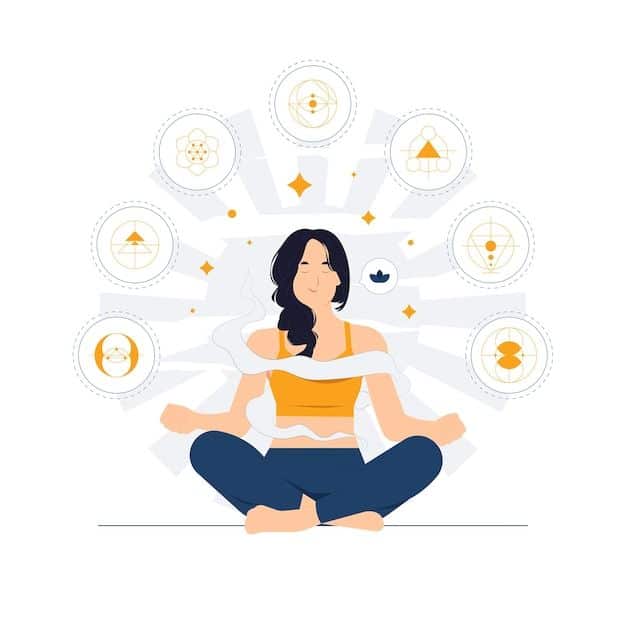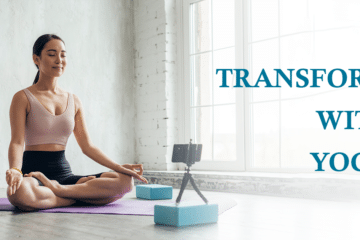Breathe & Relax offers mindful breathing exercises for peace. These exercises are designed to help you achieve a state of calm and relaxation through focused breathing techniques.
By incorporating mindfulness into your breathing, you can reduce stress, anxiety, and improve overall mental well-being. Whether you’re seeking a quick moment of tranquility or a daily practice for centering yourself, the guided exercises provided by Breathe & Relax can support your journey towards a more peaceful state of mind.
With a variety of techniques catered to different preferences and needs, Breathe & Relax invites you to explore the power of mindful breathing as a tool for finding greater peace and serenity in daily life. Discover the benefits of intentional breathing and its positive impact on mental and emotional balance as you embark on a mindful breathing journey with Breathe & Relax.

Credit: www.dreamstime.com
Understanding Mindful Breathing
In our fast-paced and often stressful lives, finding moments of peace and tranquility can be a challenge. Mindful breathing exercises offer a simple but powerful tool to help us calm our minds, reduce stress, and create a sense of inner peace.
By focusing on our breath, we can anchor our attention to the present moment, letting go of worries and anxieties. In this section, we will explore what mindful breathing is, how it works, and the key principles behind its practice.
What Is Mindful Breathing?
Mindful breathing, also known as mindful or conscious breath, is a form of meditation that involves bringing awareness to our breath in a non-judgmental way. Instead of allowing our minds to wander to past or future thoughts, we intentionally pay attention to the sensations of our breath as it enters and leaves our body. It is a way to cultivate mindfulness, which means being fully present in the current moment, without judgment.
How It Works
Mindful breathing works by directing our attention to the physical sensations of our breath, which serves as an anchor for our awareness. As we focus on the rhythm, temperature, and movement of our breath, our minds become less cluttered with distracting thoughts. By returning our attention to the breath whenever our minds wander, we train ourselves to stay present and cultivate a sense of calm and clarity.
Key Principles Of Mindful Breathing
Mindful breathing is based on a few key principles that underpin its practice. These principles guide us in creating a space of mindfulness and presence:
- Non-judgment: Mindful breathing encourages us to observe our breath without attaching any judgment or evaluation to the experience. We accept each breath as it is, without trying to change or control it.
- Attention and focus: The practice of mindful breathing involves directing our attention solely to our breath, noticing its rhythm, depth, and quality. By concentrating on this single point of focus, we develop our ability to stay present.
- Acceptance of distractions: While practicing mindful breathing, distractions such as thoughts, sounds, or bodily sensations may arise. Instead of resisting or getting frustrated with these distractions, we acknowledge their presence and gently guide our attention back to the breath.
By embracing these key principles, we can deepen our mindful breathing practice and experience the many benefits it offers. It is a simple yet profound technique that can bring us a greater sense of peace, clarity, and well-being.
:max_bytes(150000):strip_icc()/abdominal-breathing-2584115-final-14725983e6e144dea6d8c834d9d28b0c.gif)
Credit: www.verywellmind.com
Different Mindful Breathing Techniques
Mindful breathing techniques can provide a sense of calm and relaxation. Here are some different mindful breathing techniques to help you achieve peace and tranquility in your daily life.
Diaphragmatic Breathing
Diaphragmatic breathing, also known as deep breathing, involves inhaling deeply through your nose, allowing your diaphragm to fully expand. Then exhale slowly through your mouth, emptying your lungs completely.
Box Breathing
Box breathing is a technique that involves inhaling for a count of four, holding the breath for a count of four, exhaling for a count of four, and then holding the breath again for a count of four. This pattern forms a “box” shape and can help calm the mind and body.
Counting Breath
Counting breath involves focusing on your breath while silently counting inhalations and exhalations. This practice helps to bring your mind into the present moment and reduces stress.
Alternate Nostril Breathing
Alternate nostril breathing is a yoga breathing technique that involves using the fingers to alternately close off one nostril while breathing deeply through the other nostril. This practice helps to balance the flow of energy in the body and promote relaxation.
Creating A Relaxing Breathing Routine
Creating a Relaxing Breathing Routine can be a transformative practice that helps you find peace and balance in your daily life. By establishing a calming environment, finding a comfortable posture, and focusing on your breath, you can incorporate mindful breathing exercises into your routine to promote relaxation and well-being.
Setting The Right Environment
When practicing mindful breathing exercises, it’s essential to create a tranquil environment that encourages relaxation. Choose a quiet space free from distractions, dim the lights, and consider playing soft, soothing music to enhance the peaceful ambiance. By eliminating external stimuli, you can center your mind and focus on the present moment.
Finding A Comfortable Posture
Finding a comfortable posture is crucial for cultivating a successful breathing routine. Whether sitting or lying down, maintain a stable and relaxed position, ensuring that your body feels supported and at ease. Keep your spine straight and your shoulders relaxed, allowing for unrestricted airflow as you breathe deeply and mindfully.
Focusing On The Breath
Direct your attention towards the natural rhythm of your breath. Take slow, deep breaths, allowing your abdomen to rise and fall with each inhalation and exhalation. Notice the sensation of the air entering and leaving your body, embracing the present moment with each mindful breath. Engaging in this focused breathing practice can promote a sense of calm and clarity.
Incorporating Visualization Or Mantras
Enhance your breathing routine by incorporating visualization or mantras to further deepen your relaxation. Visualize peaceful scenes, such as a serene beach or a tranquil forest, and immerse yourself in the imagery as you breathe. Alternatively, choose a calming mantra or phrase to repeat silently with each breath, cultivating a sense of tranquility and inner peace.
Tips For Practicing Mindful Breathing
Discover peace and relaxation through mindful breathing exercises. These tips will help you cultivate a sense of calm and focus by harnessing the power of your breath.
Start Slow And Gradually Increase Duration
When it comes to mindful breathing exercises, a common mistake people make is trying to do too much too soon. It’s important to start slow and gradually increase the duration of your practice over time. By starting with just a few minutes each day, you allow your body and mind to become familiar with the practice and build the habit of mindful breathing. As you become more comfortable, you can gradually increase the duration to 10 minutes, 15 minutes, or even longer. Remember, the key is consistency and not pushing yourself too far too quickly.
Be Consistent With Your Practice
Consistency is the key to seeing the benefits of mindful breathing exercises. It’s important to be consistent with your practice and make it a regular part of your daily routine. Set aside a specific time each day for your mindful breathing practice and stick to it. Whether it’s first thing in the morning, during a lunch break, or before bed, find a time that works best for you and commit to it. By making mindful breathing a consistent habit, you will reap the rewards of improved mental clarity, reduced stress, and a greater sense of peace.
Combine Mindful Breathing With Other Relaxation Techniques
While mindful breathing on its own can be incredibly beneficial, you can enhance its effects by combining it with other relaxation techniques. For example, you can pair mindful breathing with progressive muscle relaxation or guided imagery to deepen the relaxation response. Another option is to incorporate mindfulness into activities you already enjoy, such as taking a leisurely walk or practicing gentle yoga. By combining mindful breathing with other relaxation techniques, you can create a more comprehensive and personalized approach to finding peace and tranquility in your daily life.
Using Guided Meditation Or Apps
If you’re new to mindful breathing or find it challenging to practice on your own, using guided meditation or apps can be highly beneficial. Guided meditation provides step-by-step instructions and prompts to help you focus on your breath and stay present in the moment. There are also various apps available that offer a range of mindful breathing exercises and guided meditations. These resources can help support your practice and provide guidance, especially if you’re looking for different techniques or need a little extra motivation.

Credit: www.amazon.com
Frequently Asked Questions Of Breathe & Relax: Mindful Breathing Exercises For Peace
Can Mindfulness Breathing Exercises Help Reduce Stress And Anxiety?
Yes, practicing mindfulness breathing exercises can help reduce stress and anxiety by bringing your focus to the present moment and calming your mind.
What Are Some Simple But Effective Mindful Breathing Exercises To Try?
Some simple and effective mindful breathing exercises include diaphragmatic breathing, box breathing, and 4-7-8 breathing. These exercises can help you relax, reduce tension, and improve your overall well-being.
How Does Mindful Breathing Promote A Sense Of Peace And Relaxation?
Mindful breathing promotes peace and relaxation by activating the body’s relaxation response. It helps slow down the heart rate, lowers blood pressure, and increases mental clarity, creating a state of calmness and tranquility.
Conclusion
Practicing mindful breathing exercises can greatly enhance your sense of peace and relaxation. By focusing on your breath, you can alleviate stress, improve concentration, and cultivate a sense of inner calm. Incorporating these simple techniques into your daily routine can have a profound impact on your overall well-being.
So take a moment, breathe deeply, and embrace the tranquility that mindful breathing can bring. Start your journey towards a more peaceful and balanced life today.



